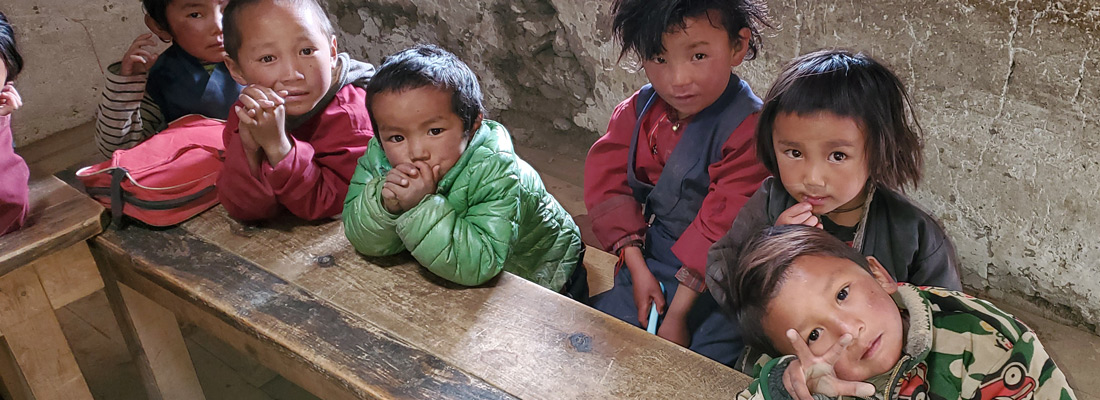
Our 2020 Goals
Spark Change – Unlock Their Potential
We are pleased to announce the start of our fund-raising effort for the 2020 school year. We are hopeful that, with your kind and generous support, we can continue our work in the remote Upper Dolpo region of Nepal.
Our primary fund raising period each year is from October through mid February. We send all funds for the entire school year to Nepal in mid February so school coordinators have time to purchase, package and arrange transport of all school and food supplies to reach the Dolpo by April 1. The school year is from April 1 until October 31. The schools are very basic without any heat, they are not suitable for winter classes.
Please give our work serious consideration and make a donation if you are able. Every dollar donated will be used for our work in the Upper Dolpo. All administration costs are borne by the Directors of the Society.
Read our Request for Support for the 2020 School Year newsletter.
2020 Projects in Brief
The Schools
Supporting education here is our primary focus.
Karang School
We are the primary sponsor for this school now, which has an annual budget of ~ $35,000. We work in conjunction with the school coordinator, Pema Gojor, to determine the annual requirement.
We also provide support to the hostel in in Kathmandu for the students from Karang that wish to complete secondary education. Pema Wangchuk, the hostel manager does a terrific job, produces the annual report and reconciles the expenditures against the budgets.
The infrastructure at this school is in good condition and they have a very good greenhouse. The greenhouse was built with funding provided by Sumchog Kersbergen, Yak Girl Dorje Dolma’s sister.
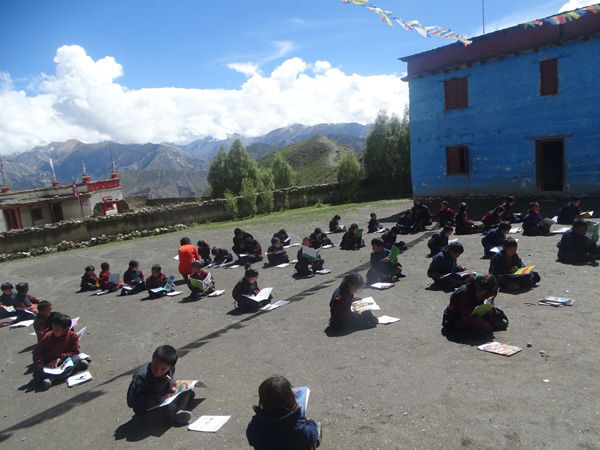
Saldang School
$8,000 for the school at Saldang, the school where Altitude Project started! We work in conjunction with a German non-profit, Freunde Nepal, to support this school. We take our instruction from Freunde Nepal regarding where support is needed. For example, in 2019 we were asked specifically to provide teacher salaries for some staff members.
We will also cover some extras not in the regular budget such as toothbrushes, toothpaste, bar soap and a pair of warm socks. We also allocate some extra funding to the school coordinator as he generously helps us with other projects such as solar lights and greenhouses.
This school is in the process of expanding to accommodate up to class 8. We are not yet sure what that means in terms of the budget from the project side, as communication with the government is not yet complete.
Leaking school roofs are still a problem and part of the budget must be allocated to repairs. Since they have started using heavy gauge plastic as part of the roof membrane, there are fewer problems but not all areas have been fixed yet.
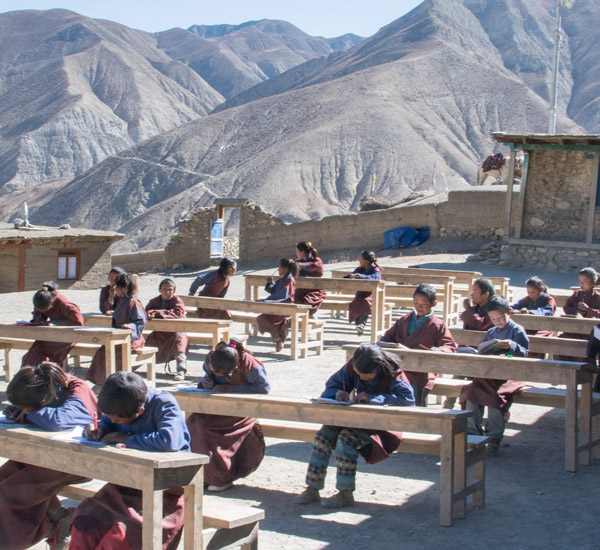
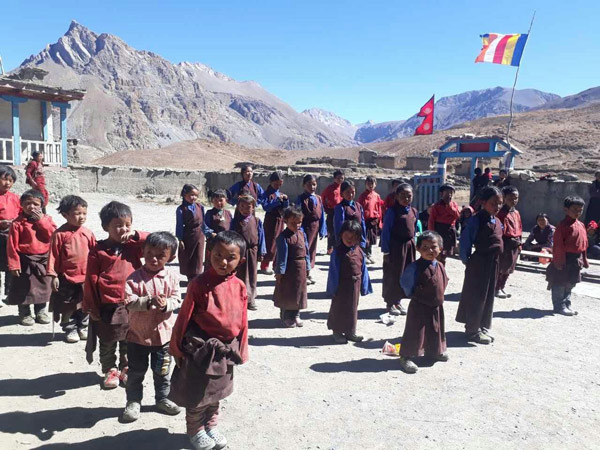
Komang School
$8,000 for the school at Komang (jointly funded with Sweden’s Tripod of Koma, and one generous German individual!). We manage the budget for this school.
For Komang in 2020 our support will be directed towards teacher salaries, student supplies and uniforms, as well as food supplies for school lunches.
Purchased foods would largely be rice and lentils to make dal bhat. Locally supplied foods would be yogurt, buckwheat (pancakes), barley (tsampa), potatoes and any other vegetables that can be grown, many in a greenhouse (greens, carrots, cucumber, cauliflower, cabbage and squash).
The budget for 2020 is not yet complete so we are not sure if there are any special projects needed next year. This school was able to put a metal roof on the school during 2018 with the help of government funding, which took some very brilliant negotiating by Tulku Lama!
Ku School
$2,000 for the school at Ku as another one-time grant. This extremely remote school was brought to our attention by Peter Werth, a philanthropist who works building sustainable energy and water projects throughout the Upper Dolpo. One of the members of Freunde Nepal agreed to take the lead of budget management with the school coordinator. Together, with a variety of NGOs, we cobbled together enough funds to keep this school going in 2019 and expect to do the same for 2020. The school coordinator, Pema Tsering Gurung, is a very ambitious, hard working young man and has created a website called The Rising Ku.
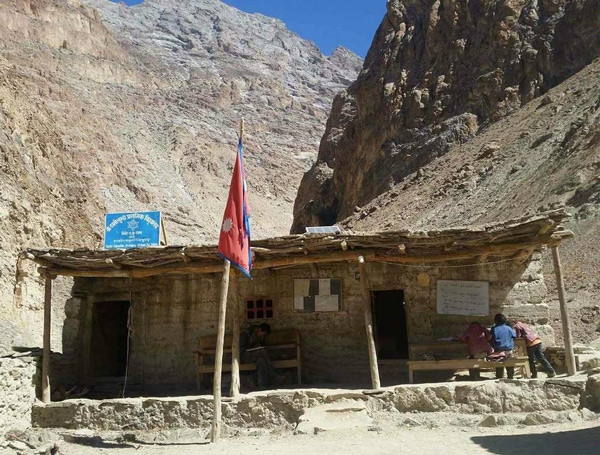
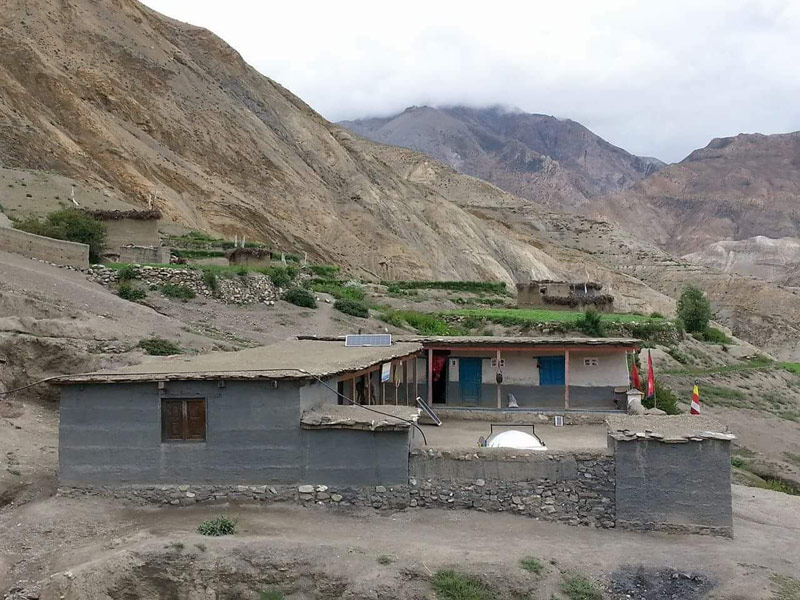
Tiling School
This school lost its sponsor in 2019 so funding was provided by a number of different NGOs. We provided $2,000 for cost to transport all supplies to the school for the year. We are planning to provide a similar level of support in 2020.
photo courtesy of David Powell
Greenhouses
Greenhouses – this is a new initiative for 2020. A shortage of arable land and a harsh climate makes food production here extremely challenging. Field crops are basic; barley, buckwheat and potatoes.
Greenhouses are becoming critical for food security as the Dolpo is increasingly impacted by climate change. Seasonal precipitation patterns have become erratic, some years there is not enough snow to provide melt water for the villagers water needs, last year there was too much snow and people and their livestock were killed by avalanches. In recent summers, unusually heavy rains have caused washouts of trails, small bridges and the terraces that are used to grow their staple crops.
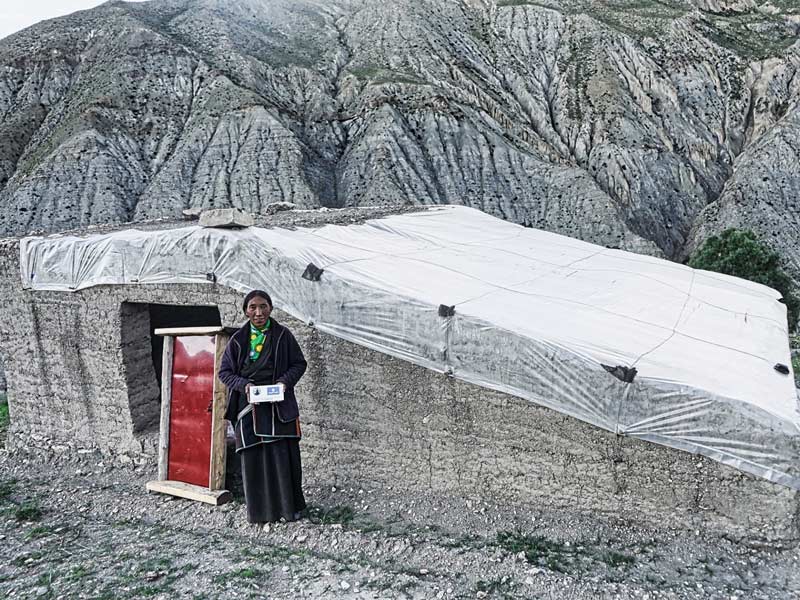
photo courtesy of Peter Hinze (we did not sponsor the building of this greenhouse)
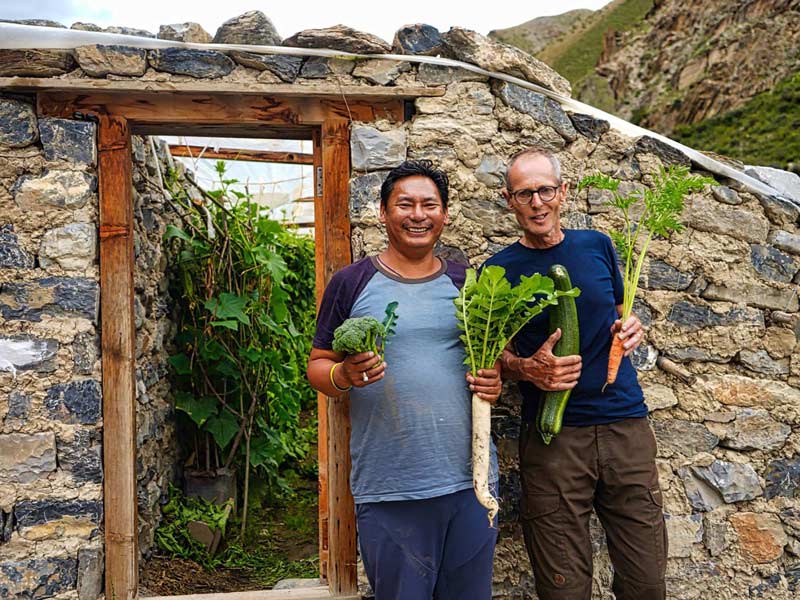
photo courtesy of Peter Hinze
Greenhouses lengthen the growing season significantly and provide nutritious vegetables that otherwise cannot be grown. The ability to grow greens, carrots, cucumber, cauliflower, cabbage and squash dramatically improves nutrition and food security.
Greenhouses also provide a warm, bright room in winter. They are used in the home for activities such as weaving, and in schools for winter classes on the Tibetan culture taught by local monks.
We are extremely fortunate to have a good start on the greenhouse program for 2020, as some generous donors have provided dedicated funds that will allow us to purchase enough materials for up to 20 simple greenhouses that will be attached to homes. The cost of materials is approximately $500 per greenhouse and we are hopeful that we can raise sufficient funds to provide another 10 greenhouses.
photo courtesy of David Powell
Solar Lights
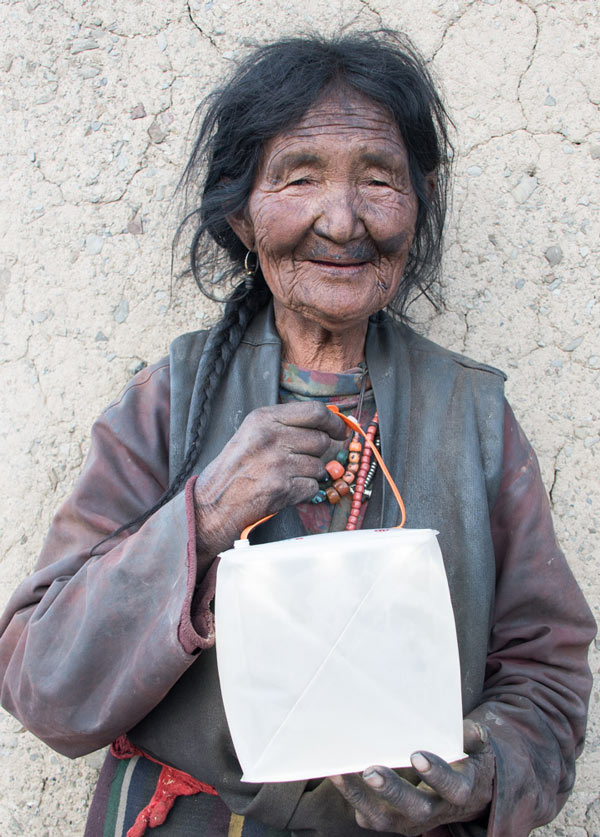
Purchase of solar lights for additional villagers
The number of lights for 2020 is still to be determined by our coordinator in the Upper Dolpo.
In October of 2017 when we trekked to the Upper Dolpo to visit the schools, we took 15 portable solar lights. The cost of each light is ~ $20 US. They provide ~ 150 lumens and can be hung like a lantern – a very practical design. We wanted to test their durability and usefulness so only took a few. Very quickly there was a request for 125 more lights, complete with names of individuals and their village location.
Fire from yak dung or kerosene lanterns is the only light source for most households here and the resulting indoor pollution causes pulmonary and eye disease. These lights have proven to be extremely useful and durable; as a general light in the home, to travel to the toilet at night; to help students read and study in the evenings, and to visit neighbours. Most unexpectedly, they seem to keep snow leopards away from their animals at night when they are grazing them in their high mountain summer camps.
Many of the older adults suffer from very poor eyesight due to exposure to long hours of sunlight working in the fields at 14,000 feet elevation. They say these lights have really improved their quality of life.
We are able to purchase these at considerable discount for charitable purposes through LuminAID and offer very special thanks for their help!
Menstrual Hygiene Kits
We will deliver additional Days for Girls menstrual hygiene kits – the number of kits will be determined by nurses from the Dolpo. These kits are only $10 each but are life changing for the girls and women of the Dolpo.
Even though the schools here do not go beyond grade 6, because some students start late, students range in age from 3 to 16. Girls without access to menstrual pads often stay home. If they miss an average of four days of school each month, that is 20 per cent of the school year. Too often this leads to lower grades or dropping out of school altogether.
Each colorful kit contains underwear and 8 reusable menstrual pads, as well as soap, a snap in system and carrying bag. The kits are washable and can last up to five years. Nurses will distribute them and give classes on fertility, biology and hygiene.
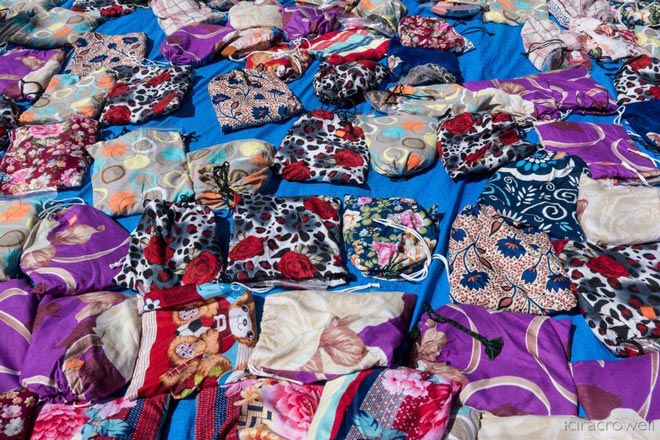
photo courtesy of Tsering Wangmo, Nurse and Co-Director of Nomads Clinic
Soap – A Small Helping Hand with a BIG Impact
Hand Washing Promotion
Many of you know that I caught pneumoia on my last trek and had to be helivacced out of the Dolpo to a hospital in Kathmandu.
Pneumonia is a common illness here and many die. Children, especially those weakened by undernourishment are most vulnerable. Improvement of general hygiene, especially hand washing with soap, will dramatically reduce the incidence of this disease. (A study published in the Lancet showed that children younger than 5 years in households that received plain soap and handwashing promotion had a 50% lower incidence of pneumonia than controls. Children younger than 15 had a 53% lower incidence of diarrhea. These are the two leading causes of childhood death.) We will supply bar soap for each student as part of the school supplies in 2020.

Teacher Training
REED
We will continue with the second year of the three year REED teacher training program.
During 2018, the NGO REED – Rural Education and Environmental Development Centre Nepal, visited schools in the Upper Dolpo to assess the quality of education. Most project teachers are not professionally trained. They are people from the villages who completed high school, at minimum, in Kathmandu and have returned to help their villages as teachers.
REED proposed a three year teacher training program that would provide a path to certification for teachers that are not fully qualified. Nine NGOs contributed to this training effort and feedback from the 2019 training has been excellent.
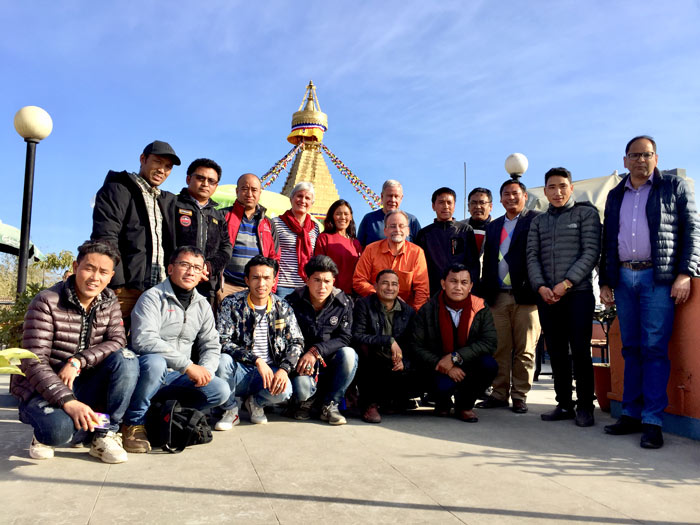
After our teacher training meeting with REED
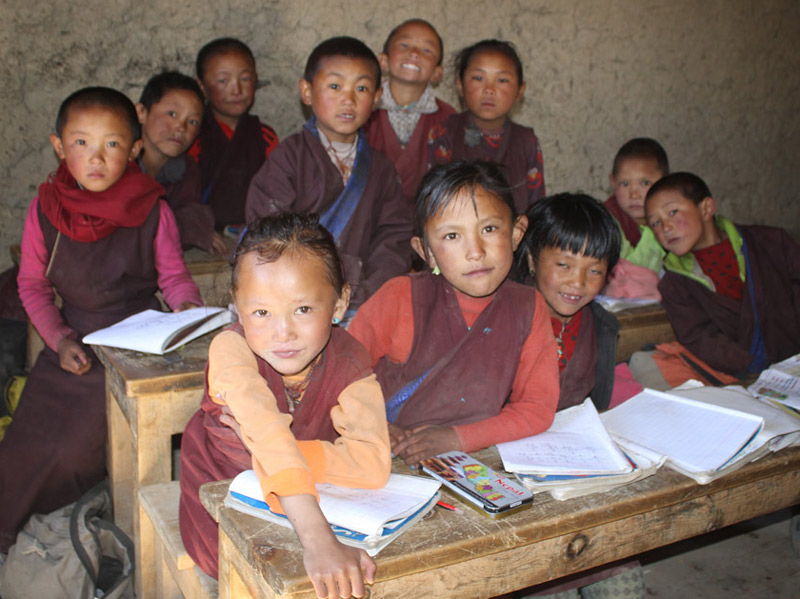
Teacher Training and Poverty
An interesting note…
The 2019 winners of the Nobel prize in Economics sought to explain empirically which interventions work to alleviate poverty and why. “The goal of our work is to make sure that the fight against poverty is based on scientific evidence.”
They illustrated that a true barrier to student achievement was teaching methods that were insufficiently shaped to student need, and that money spent on teacher training helped students learn more in school and yielded long lasting and invaluable results, not just for the individual students, but for lifting the community out of poverty.
Tenzin Norbu, Saldang Graduate
We will continue to support Tenzin Norbu as he enters class 10 at a Tibetan exile school in Kathmandu.
Saldang School only goes to class 6. The schools at Karang and Komas go to class 5. To continue their education, students must move to Kathmandu, the capital city of Nepal and a world away from the Dolpo. Please read more, these are truly amazing kids!
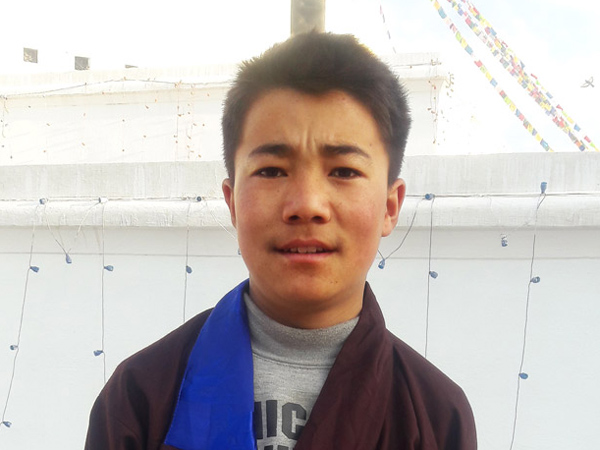
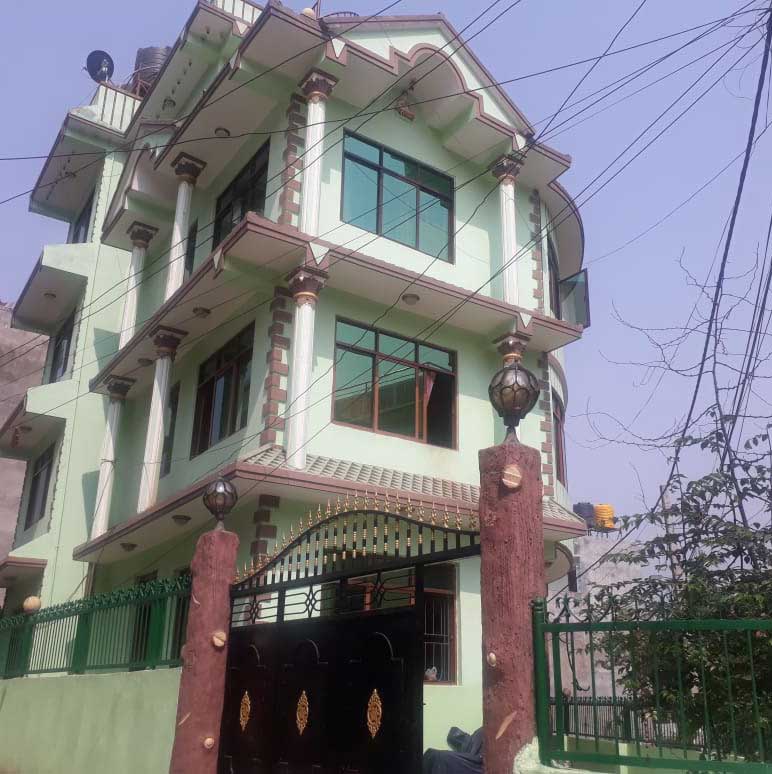
Karang Hostel in Kathmandu
Schools in the Upper Dolpo only teach to grade 5 or 6. Children wanting a secondary education must move to Kathmandu. Each village has a hostel in Kathmandu where the students live and study with other children from their village. They are supported by hostel staff, who are also from their village. This helps to maintain a sense of community and culture – a critical factor when they move from a village of 500 to the completely unfamiliar and chaotic environment of Kathmandu, population 1 million.
The village of Karang recently opened a hostel for its grade 5 graduates. Funding was provided by the government for the first half of the year but the hostel requires support from the international community to continue. The anticipated operating cost is $10,000 US. That includes rent, utilities, food, school fees and supplies and staff wages. Our dream is to find sponsors who want to help with this project on an ongoing basis. If this interests you, please email me. And if you ever travel to Nepal, the hostel would be a very easy place to visit to see the fruits of your kindness.
It always seems impossible, until it’s done.
– Nelson Mandela.

